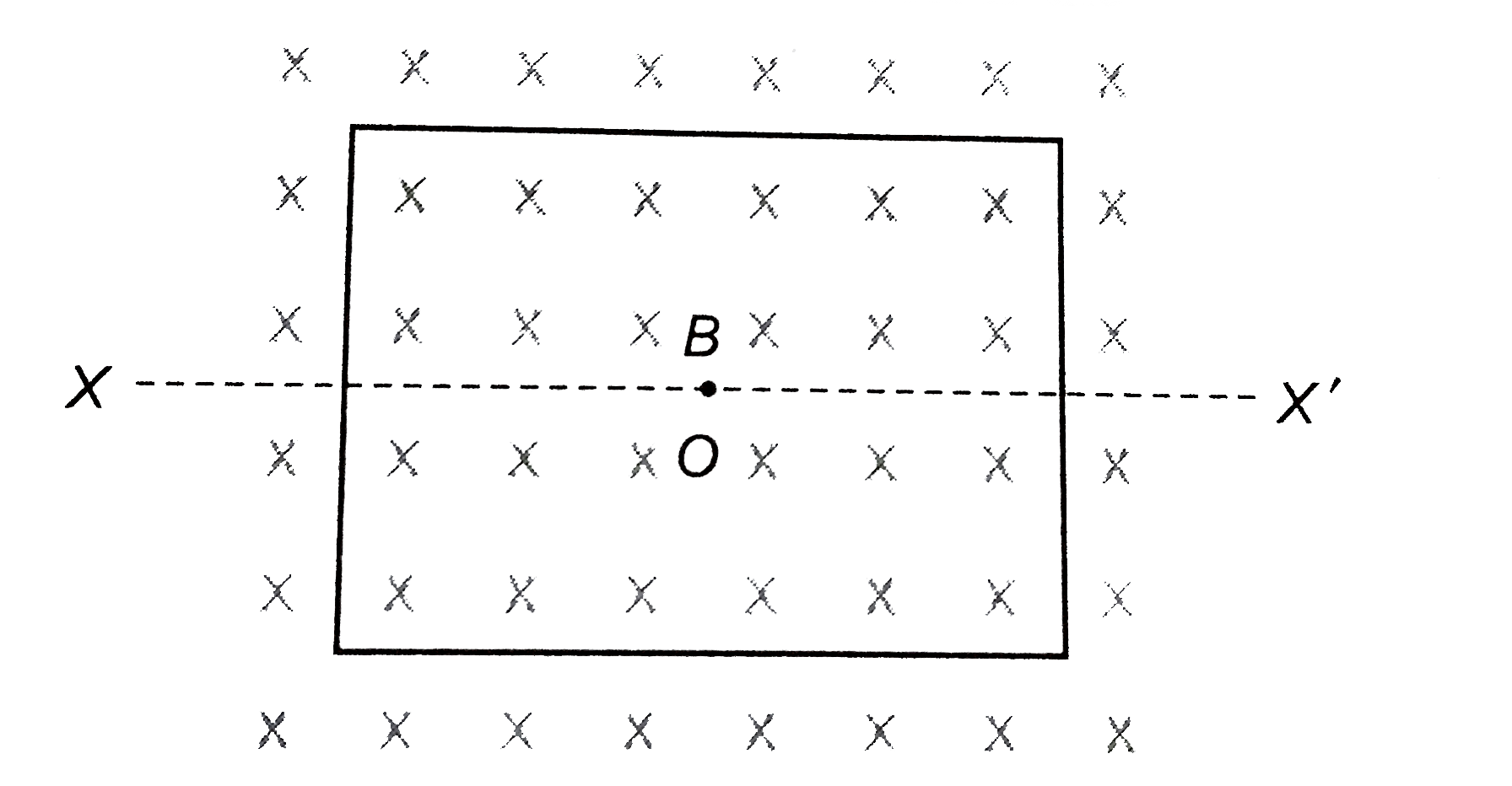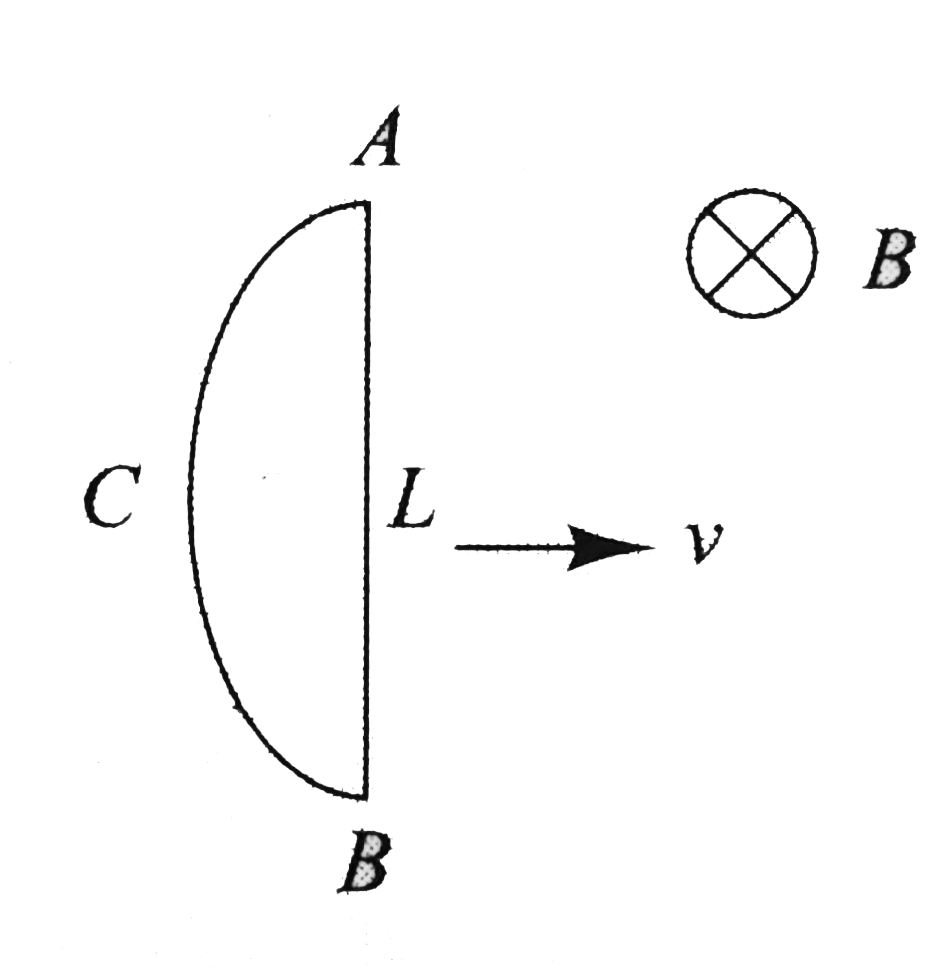An emf can be induced in stationary coil if it is kept in
Stationary uniform magnetic field
Stationary nonuniform magnetic field
Time varying magnetic field
Not possible
The correct Answer is:C
To solve the question "An emf can be induced in a stationary coil if it is kept in...", we will follow these steps:
Step 1: Understand the Concept of Electromagnetic Induction
Electromagnetic induction refers to the process by which a changing magnetic field can induce an electromotive force (emf) in a coil or conductor. According to Faraday's law of electromagnetic induction, the induced emf in a coil is directly related to the rate of change of magnetic flux through the coil.
Step 2: Define Magnetic Flux
Magnetic flux (Φ) through a coil is defined as:
Φ=B⋅A⋅cos(θ)
where:
- B is the magnetic field strength,
- A is the area of the coil,
- θ is the angle between the magnetic field lines and the normal to the surface of the coil.
Step 3: Analyze the Situation
In this case, the coil is stationary, which means that:
- The area A of the coil remains constant.
- The angle θ between the magnetic field and the normal to the coil surface is also constant.
Step 4: Apply Faraday's Law
According to Faraday's law, the induced emf (E) in the coil is given by:
E=−dΦdt
Substituting the expression for magnetic flux:
E=−ddt(B⋅A⋅cos(θ))
Since A and cos(θ) are constant, we can simplify this to:
E=−A⋅cos(θ)⋅dBdt
Step 5: Determine Conditions for Induced EMF
For the induced emf E to be non-zero, the term dBdt must not be zero. This means that the magnetic field B must be changing with time.
Step 6: Conclusion
Thus, an emf can be induced in a stationary coil if it is kept in a region where the magnetic field is varying with time. Therefore, the correct answer is that an emf can be induced in a stationary coil if it is kept in a time-varying magnetic field.
Final Answer
An emf can be induced in a stationary coil if it is kept in a time-varying magnetic field.
---
Electromagnetic induction refers to the process by which a changing magnetic field can induce an electromotive force (emf) in a coil or conductor. According to Faraday's law of electromagnetic induction, the induced emf in a coil is directly related to the rate of change of magnetic flux through the coil.
Magnetic flux (Φ) through a coil is defined as:
Φ=B⋅A⋅cos(θ)
where:
- B is the magnetic field strength,
- A is the area of the coil,
- θ is the angle between the magnetic field lines and the normal to the surface of the coil.
In this case, the coil is stationary, which means that:
- The area A of the coil remains constant.
- The angle θ between the magnetic field and the normal to the coil surface is also constant.
According to Faraday's law, the induced emf (E) in the coil is given by:
E=−dΦdt
Substituting the expression for magnetic flux:
E=−ddt(B⋅A⋅cos(θ))
Since A and cos(θ) are constant, we can simplify this to:
E=−A⋅cos(θ)⋅dBdt
For the induced emf E to be non-zero, the term dBdt must not be zero. This means that the magnetic field B must be changing with time.
Thus, an emf can be induced in a stationary coil if it is kept in a region where the magnetic field is varying with time. Therefore, the correct answer is that an emf can be induced in a stationary coil if it is kept in a time-varying magnetic field.
An emf can be induced in a stationary coil if it is kept in a time-varying magnetic field.
Topper's Solved these Questions
- ELECTROMAGNETIC INDUCTIONBOOK - AAKASH INSTITUTE ENGLISHCHAPTER - ELECTROMAGNETIC INDUCTIONEXERCISE - ASSIGNMENT(SECTION - B) (OBJECTIVE TYPE QUESTIONS)
25 Videos
- ELECTROMAGNETIC INDUCTIONBOOK - AAKASH INSTITUTE ENGLISHCHAPTER - ELECTROMAGNETIC INDUCTIONEXERCISE - ASSIGNMENT(SECTION -C) Previous Years Questions
34 Videos
- ELECTROMAGNETIC INDUCTIONBOOK - AAKASH INSTITUTE ENGLISHCHAPTER - ELECTROMAGNETIC INDUCTIONEXERCISE - EXERCISE
30 Videos
- ELECTRIC CHARGES AND FIELDS BOOK - AAKASH INSTITUTE ENGLISHCHAPTER - ELECTRIC CHARGES AND FIELDS EXERCISE - comprehension
3 Videos
- ELECTROMAGNETIC WAVESBOOK - AAKASH INSTITUTE ENGLISHCHAPTER - ELECTROMAGNETIC WAVESEXERCISE - ASSIGNMENT SECTION - D Assertion-Reason Type Questions
25 Videos
Similar Questions
Consider the following statements: (a)An emf can be induced by moving a conductor in a magnetic field. (b)An emf can be induced by changing the magnetic field.
View SolutionConsider the following statements: (a)An emf can be induced by moving a conductor in a magnetic field. (b)An emf can be induced by changing the magnetic field.
View SolutionA rectangular coil is placed in a region having a uniform magnetic field B perpendicular to the plane of the coil. An emf will not be induced ion the coil if the

View SolutionAn emf of 2 V is induced in a coil when current in it is changed from 0 A to 10 A in 0-40 sec. Find the coefficient of self-inductance of the coil.
View SolutionFind the emf induced in the coil if it were positioned such that its plane contains the axis of the solenoid.
View SolutionThe average emf induced in the secondary coil is 0.1V when the current in the primary coil changes from 1 to 2A in 0.1s.What is the mutual inductance of the coils.
View SolutionThe phase difference between the flux linkage and the induced e.m.f. in a rotating coil in a uniform magnetic field
View SolutionThe current in a coil changes from 3.50 A to 2.00 A in the same direction in 0.500s. If the average emf induced in the coil is 12.0mV. What is the inductance of the coil?
View SolutionThe induced e.m.f. in a coil does not depend on
View SolutionShows a closed coil ABCL moving in a uniform magnetic field B with a velocity v.
Find
(a) emf induced in the coil.
(b) emf induced in curve part ACB and straight AB

View Solution
